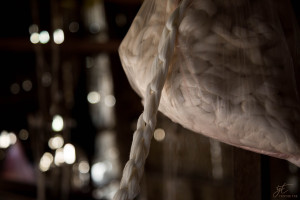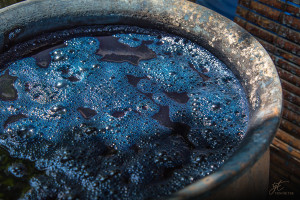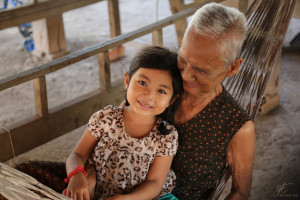Through Yennie Tse’s love for creativity and design, coupled with her trained background and experience in business and community development, she has created the Fourth Sector Collection, a social enterprise that is now in the research and development phase. Fourth Sector will aim to create sustainable partnerships by working with artisan weavers in developing countries and American cut and sew manufacturers in economically distressed cities to create home and accessories products with heritage & impact. Yennie recounts the lessons and insights from her trip visit to weaving communities in Cambodia and Laos.
Over a two-week period in Cambodia and Laos, I had the privilege and opportunity to meet incredible people, learn about heritage and culture, different dye and weave techniques, as well as engage with local families and communities. Patterns, colors and techniques are undoubtedly beautiful but true beauty is found within the visits and organic conversations and observations from the communities that create these materials. In just this short period of time, I felt more integrated into Cambodian culture and the lives of the weaving families. Going in with appreciation and an open mind, I came out with a broadened perspective and questions that peeked my interest and garnered my curiosity. As a result, I began to seek solutions to questions I may not necessarily have answers to but in my search might bring about inspiration and innovation.
Locally Grown vs. Regionally Sourced Fibers | A consideration for environmental consciousness is the use of locally grown raw materials to produce fibers for weaving fabric which promotes market opportunity for the local economy. Sourcing locally also reduces carbon emissions caused by the transportation and shipment of these materials. It begs the question that if the land and the weather in a country hinders crops from being grown locally, are they to blame for sourcing fibers from other countries? If a community grows raw resources locally, but doesn’t have the scale to produce large quantities, does that hinder the attractiveness to procure from that artisan group?

Natural Dyes vs. Low Chemical Dyes | Natural dyes are less toxic than their synthetic counterparts and some natural dyes have pharmacological effects and possible health benefits. Natural dyes also have no disposal problems, as they are biodegradable and come from renewable sources. But, what if the communities no longer have the capacity to grow these crops? What if the weather destroyed the indigo plants like they did in countries such as Laos? Can you fault a community who might use synthetic dyes that are AZO free and low in chemicals for their materials?

Preservation of Weaving Artform vs. Socialization of Women in Urban | Advocates for artisan enterprises and handicraft activities promote art preservation and cultural heritage. These artisans often live in small communities and rural areas. As some cultures become more progressive which may include more opportunities for women to become increasingly independent, these artisans may be drawn to urban areas. Urban centers present opportunities and better social integration for women, provide a high concentration of resources, convenient access to educational and social facilities, as well as improved income. Would advocating for artisan activity unintentionally prevent other opportunities that may benefit artisans from migrating to urban areas? How can we promote liberalization for women while fearing the loss of artisans in rural areas? Would we ever overlook better opportunities for girls and women to integrate for the sake of preserving art form in rural communities?

These questions and answers influence the artisan groups I engage with and textiles with which I will procure. Answers to these questions will vary per person, but I will continue to contemplate about them because as advocates for artisan activities, it must be our intent to improve and enhance the livelihoods of the artisans. Therefore, I can’t help but to be sensitive to their circumstances and situations, which can influence business done with the artisans. These are thoughts that each supporter of artisan handicraft should consider, that as advocates and consumers we should to truly try to improve local livelihoods.

